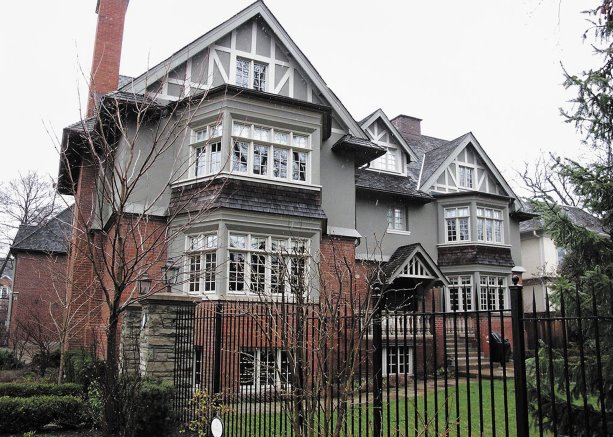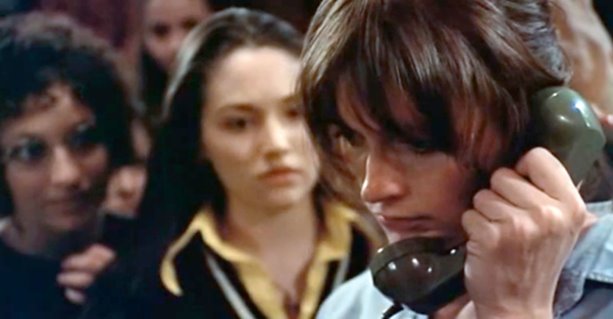When filmmakers are looking for sites for movie shoots these days, it’s easy to get started. The Ontario Media Development Corp. boasts that it has “revolutionized the way film and TV producers scout potential filming sites” with its database with over 270,000 digital images relating to potential movie sets.
But 40 years ago, the process required a lot more cab fares and shoe leather. For the late Bob Clark, producer and director of the seminal Canadian horror film Black Christmas (1974), it was hit and miss, driving around the University of Toronto campus and beyond looking for the perfect large home that would suit his script.
Finally, he came upon a three-storey Tudor Revival home on tony Clarendon Crescent in the South Hill area and knew his search was over.
Clark, who died in 2007, was interviewed for a documentary produced as part of a re-release of Black Christmas on DVD by the company Critical Mass. Clark says, "I saw this little driveway, a private house, I pulled in there … and that was it. I have to have it."
Karen Bromley, the film’s art director, commented, "You stood on the cul de sac and you looked at the house, and you knew there was something very creepy possible in there."
Creepiness was certainly the last thing on the mind of Toronto architect Charles P. Band when he designed the home.
The house was designed for the H.H. Beck family with completion in 1906. What appeared rife with malevolent possibilities to filmmakers Clark and Bromley 40 years ago seems charming today to Robert Hill, an architect with the firm KPMB Architects of Toronto and the author of the Biographical Dictionary of Architects in Canada 1800-1950.
"I’m surprised this building was used as a setting for a horror film," said Hill. "It doesn’t have any of the qualities that you see in classic horror-film houses."
He calls it a "fine example of Rosedale domesticity with exquisite detailing."
The home looks to have elements of Tudor Revival and Queen Anne Revival styles, says Hill, typical of many homes in the Rosedale area. Tudor Revival was popular in England from 1890 to 1910 and about 10 years later in Canada. He was studying a photo of the Clarendon Crescent house as he talked.
"If you look at impeccable detailing of some of the forms and shapes on the exterior of the house, it really has a strong British influence, from the half-timber framing on the third-floor, the projecting bay windows, and also the asymmetrical form of the house interests me.
"Also the gable over the front is very characteristic of the Tudor Revival or Queen Anne style."
The home is three floors with a half basement. Typical for the style, he said, the entrance to the half basement is visible to the side of the front door, underneath a balustrade.
The third floor — that is where Billy, the murderous interloper, hung out, unbeknownst to a group of sorority members who were stuck in the fictional town of Bedford at the beginning of Christmas break. Ranked fourth on complex.com’s list of the 50 Scariest Movies of All Time, behind Texas Chainsaw Massacre, The Shining and Night of the Living Dead, Black Christmas is viewed as the precursor to slasher films like Halloween and mystery-phone-call thrillers like When a Stranger Calls.
The cast offered Billy a choice selection of potential victims, including characters played by Margot Kidder, Andrea Martin, Olivia Hussey and Lynne Griffin. Male co-stars included Kier Dullea, John Saxon, Art Hindle and Doug McGrath.
Los Angeles writer Ian Sedensky, proprietor of culturecrypt.com, made sure to stop by Clarendon Crescent on a visit to Toronto last year.
"It’s a popular pit stop for film fans," said Sedensky. He says there is an unspoken code among Black Christmas fans not to divulge too much about the home since it is in private hands.
"What makes the Black Christmas house stand out as an iconic movie home is that it is a complete character," Sedensky said.
"Bob Clark is upfront about how important the house is by making it both the first and final shots of the film."
Adding emphasis on the home and its layout, says Sedensky, are the slow-moving pans of the interior and use of a camera mounted on the villain’s head for first-person exploration of the home.
The attic plays a crucial role in the film since a body that is hidden there for the entire movie, with everyone looking for it, he says, is the catalyst that brings the core cast together.
"The basement features in a key scene during the climax, too," said Sedensky.
"If the house doesn’t have the specific layout it does, the entire plot would have to play differently."





Recent Comments
comments for this post are closed